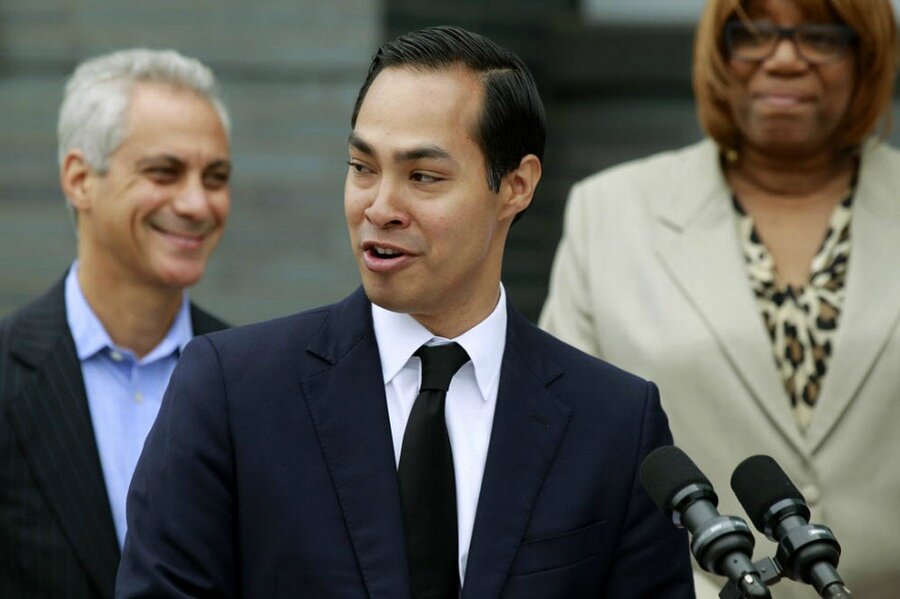Obama puts 'fair housing' on agenda: Why segregation still matters
Loading...
| Washington
The Obama administration laid down a marker with a newly issued rule under the Fair Housing Act, arguing that racially segregation in housing remains a significant problem for America – and that the problem can be solved.
The rule, at face value, doesn’t sound revolutionary: It will equip cities that receive federal housing funds “with the data and tools that will help them to meet long-standing fair housing obligations in their use of HUD funds,” the department of Housing and Urban Development (HUD) said in announcing the change Wednesday.
But with those data and tools comes the expectation that they will be used to address the patterns of segregation that persist, some 47 years after the Fair Housing Act was enacted in an effort to end racial discrimination in housing. Proponents say the new rule puts new pressure on communities to act, and that a failure to do so could result in loss of federal funds.
In those five decades, the level of racial segregation has decreased, but slowly – and predominantly black neighborhoods in particular have persisted.
“As we see in Ferguson, Baltimore, McKinney, and cities across the nation, America today is still grappling with the ugly legacy of segregation and concentrated poverty,” Shanna Smith, president of the National Fair Housing Alliance, said in a statement about the new housing rule. “This rule will help ensure that everyone – regardless of their zip code – has a fair shot at the opportunities they need to succeed.”
Her reference to poverty touches on what economists see as a core point: Racial segregation coincides heavily with economic inequality.
Both segregation and concentrated poverty have persisted in recent decades, despite a growing black middle class and despite the trend of poverty becoming as likely to be found in suburban as in urban neighborhoods.
At the same time, recent economic research has found that housing mobility can translate into upward economic mobility. In other words, where people live has sizable impacts on how they fare in life.
When a child moves from a high- to lower-poverty area (thanks to housing vouchers), that brings substantial benefits to both individuals and taxpayers, according to an analysis by Harvard University economists Raj Chetty and Nathaniel Hendren.
From its inception, the Fair Housing Act was aimed not only at ending overt discrimination in local real estate markets but also at “affirmatively” promoting more diverse communities.
“For too long federal efforts have often fallen short," HUD Secretary Julian Castro said Wednesday in Chicago as he announced the new rule, called the Affirmatively Furthering Fair Housing regulation.
The rule could result in zoning changes and other local actions that make it easier for residents to move out of heavily segregated areas. And, according to a HUD fact sheet, it will also encourage “transforming racially and ethnically concentrated areas of poverty into areas of opportunity,” which might ultimately make those neighborhoods more racially diverse.
Critics of the effort say it’s a misguided attempt to micro-manage local housing policies, at a time when racial redlining is largely history.
“Once again, the Obama Administration thinks it knows best for local communities, and is attempting to usurp the most basic zoning authority in a misguided attempt to create equal outcomes rather than equal opportunities,” Rick Manning, president of Americans for Limited Government, said in an online response to the news.
Still, demography experts say the persistence of racial segregation is significant.
For example, an analysis of 2010 Census data by John Logan of Brown University in Providence, R.I., and Brian Stults of Florida State University in Tallahassee documented the pattern and said that “studies that track the experience of minority persons in the rental or homeowner market continue to find that they are treated differently than comparable whites.”
The report also noted that communities with a high share of African Americans and Hispanics “are often served by the worst performing schools, suffer the highest crime rates, and have the least valuable housing stock in the metropolis. Few whites will choose to move back into these neighborhoods as long as they suffer such problems.”
Some fair-housing proponents sketch possible paths to lessen segregation. One group, The Opportunity Agenda, says the options include:
• Adopting inclusionary zoning, in which cities encourage or require developers to make a percentage of new housing units affordable for low- and moderate-income households.
• Providing vouchers or other resources to help people move from high- to lower-poverty areas.
• Altering local policies to reduce instances in which families are evicted from housing because of one family member’s drug-related offense.
• Encouraging “community land trusts,” a nonprofit form of land ownership, for affordable housing and other community development that can include commercial uses.








